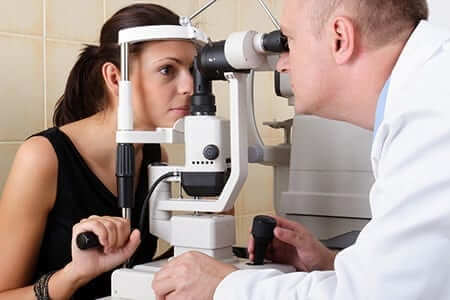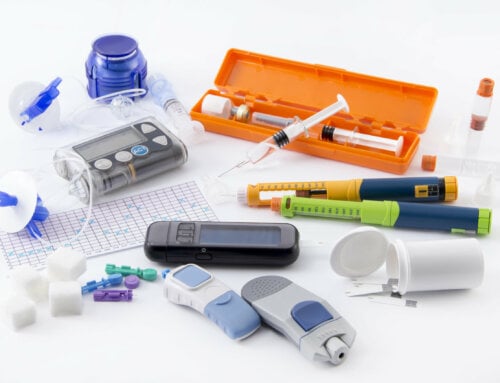New trends in diabetes eye care focus on early detection and prevention. People with diabetes are prone to certain eye conditions. Discover more about how diabetes affects the eyes and what you can do about it.
- Diabetes can affect your eyes because of changes in the blood vessels that might impact the ability to supply nutrients to the retina. The retina is tissue that lines the back of the eye, senses light and sends visual information to the brain. When it is deprived of a natural blood supply and oxygen, the retina looks for new blood vessels to feed it. These become abnormal blood vessels referred to as neovascularization. The blood vessels grow on the surface of the retina and may tear and bleed into the eye. This blood can cause the retina to detach from the back of the eye, leaving a dark spot in your vision.
- Diabetes can also cause the blood vessels in the retina to leak. The fluid that leaks can accumulate in the central vision area of the retina, referred to as the macula. As a result, the vision becomes blurred or distorted. This is called diabetic macular edema, which can lead to decreased vision. Other eye conditions people with diabetes may develop include cataracts and glaucoma. Cataracts cause the clear lens of your eyes to get cloudy. Glaucoma occurs when pressure builds in the eye.
- Patients with diabetes should visit an ophthalmologist/optometrist at least once a year for a diabetic eye exam. During the exam, the doctor will dilate your eyes to examine them for signs of eye disease. The eye doctor will look for blood spots, abnormal blood vessels growing on the retina and examine the macula for diabetic macular edema. Early detection can help save your vision and prevent further eye problems. When your eyes are dilated, you should make arrangements to get a ride home after the eye exam as your vision will be blurred.
- When eye problems are detected in a reasonable time, there are various innovative ways the conditions can be treated. Lasers are used to treat diabetic macular edema and proliferative diabetic retinopathy. This specialized laser surgery, called pan retinal photocoagulation, destroys the areas of the retina where blood vessels have closed and where new ones are needed. After being treated, the retina will stop making new blood vessels and the existing ones start to shrink. This type of laser treatment can reduce the potential of severe vision loss by more than 50 percent.
Laser treatments are also done to treat the leaky blood vessels associated with diabetic macular edema. The doctor might order a fluorescein angiogram to find where the leakage occurs to treat it with laser. - People with diabetes should get an eye exam at least once a year. Your treating physician may recommend more frequent exams if there are changes in your retina or if you have other eye conditions. It is also important to visit your physician regularly to help you control diabetes and develop an effective self-management plan. Test your blood sugars regularly and keep records to share with your doctor during regular visits. Report any serious fluctuations to your doctor right away. Make sure to have plenty of testing supplies on-hand including diabetic test strips.
- If you experience any changes in vision between regular exams, make an immediate appointment to discuss them with your eye doctor. Be aware of the symptoms that could indicate you have a vision problem; you might have blind spots, double vision or be unable to see in dim light. Blurry vision, pain in your eyes, headaches, floaters, shadows and inability to see things in the periphery could all be indications of a problem.
- Proper blood sugar control has been shown to decrease the progression diabetic retinopathy. Keep your blood pressure and blood cholesterol levels under control to minimize the potential of developing eye disease. Eat a healthy diet including lean fish and meats, low-fat dairy, whole grains and fruits and vegetables. Exercise at least five times weekly for at least 30 minutes. Quit unhealthy habits such as smoking.
- Research methods continue to be developed, including a special optical tomography of the eye. For young patients with type 1 diabetes, the administration of insulin may delay the development of diabetic retinopathy. Other treatments being used include enzymatic vitreolysis, laser therapy, anti-inflammatory treatment, intravitreal injections and anti –angiogenic treatments.
Diabetes related eye problems are the leading cause of blindness in people ages 20 to 74. Awareness, prevention and regular treatment with an eye doctor are ways to ward off potential eye problems. Knowledge can empower you to develop lifestyle habits for the best possible health.







Leave A Comment